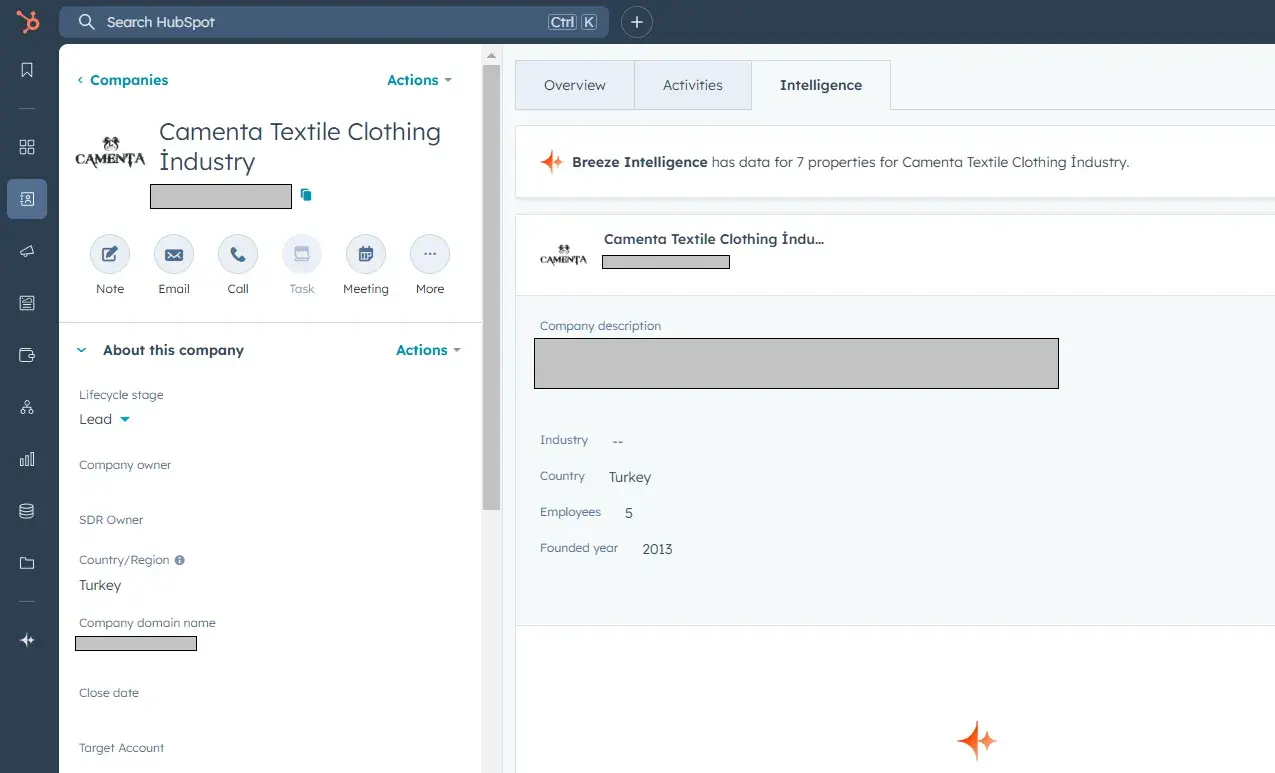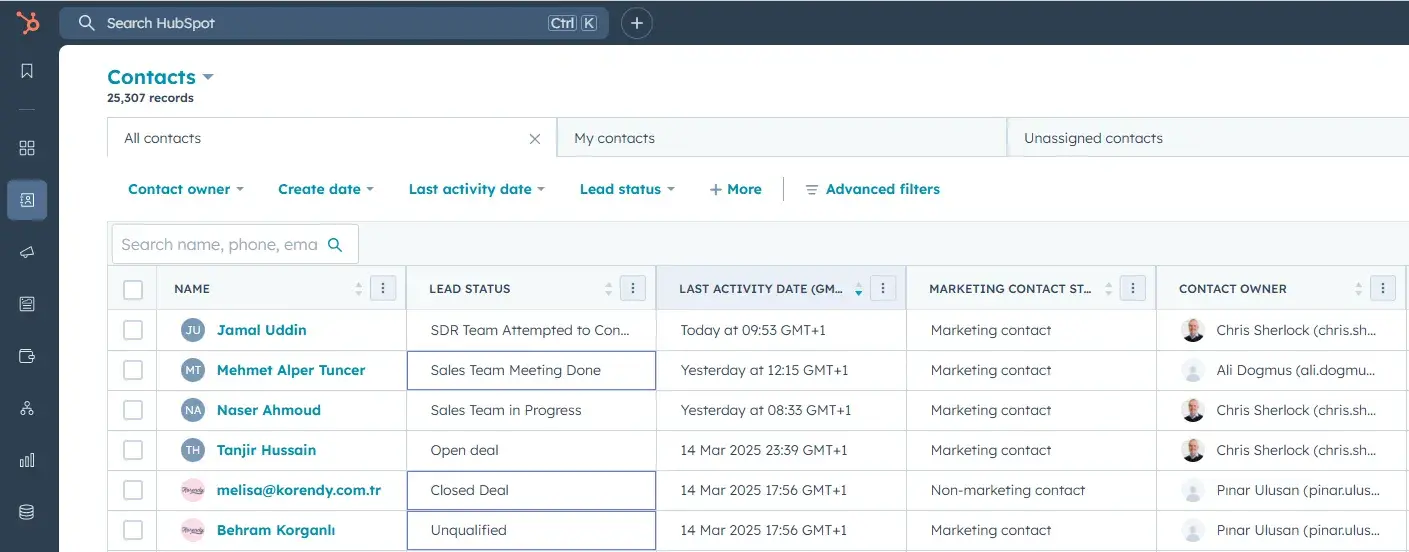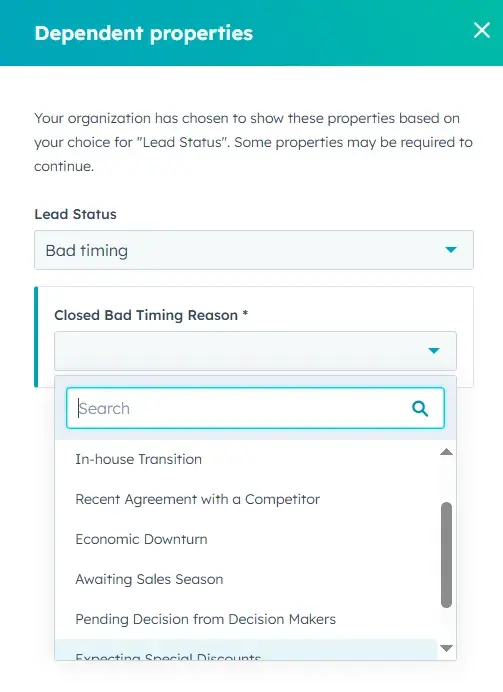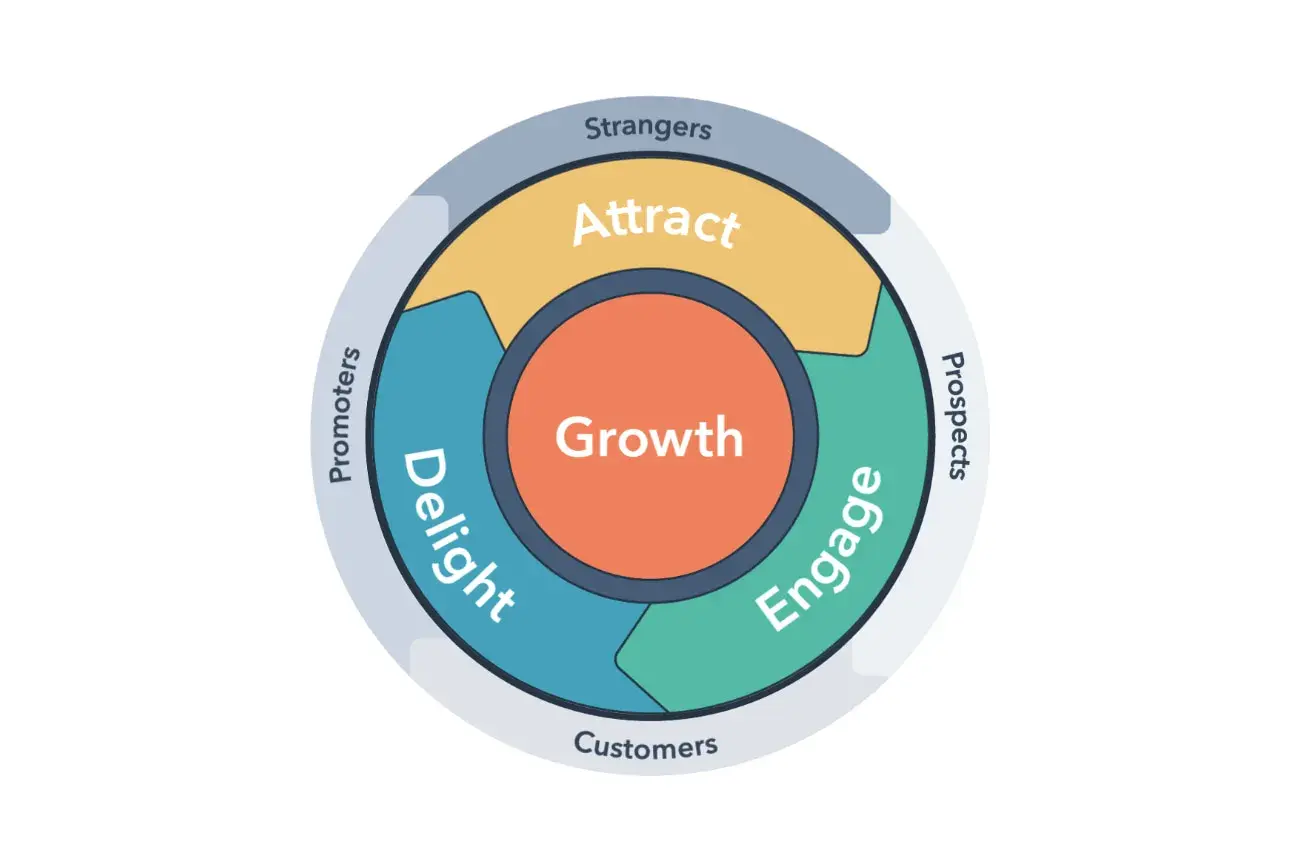Table of Contents
- Challenges of B2B Sales
- How to Create A Positive B2B Sales Experience
- B2B Sales Examples
- Please your customers throughout the sales experience.
Challenges of B2B Sales
Here are three key challenges B2B sales reps must navigate to ensure a seamless and engaging brand experience for prospects. I have also written practical strategies to overcome them.
Challenge 1: Not Being Pushy
Meeting sales quotas is always the goal, but there’s a fine line between being persistent and coming off as pushy. Prospects don’t want to feel pressured into a decision. This is especially true nowadays that buyers want to feel in control of their buying journey.
If a sales rep is too aggressive, it can create resistance, making the prospect disengage or even reject the offer outright. I feel that bombarding them with constant follow-ups and lengthy sales pitches is a thing of the past. Now, everything should feel organic rather than forced.
How to solve it: Let the prospect make the next move.
The best sales conversations happen when the prospect expresses genuine interest in the solution. I’ve found that this happens most when I showcase real industry examples and how someone in their space implemented the solution. Then, I mention the measurable impact it had on them.
That said, not every prospect fully understands the value of my product up front. But forcing a full demo on them isn’t the answer either. Instead, I take a more tailored approach: I share small, relevant snippets of the product (customized to their specific problem) while positioning just one key feature and a budget-friendly package.
This way, prospects are more open to engaging with me, lowering their defenses, and making the next steps feel natural rather than forced.
Pro tip: Avoid pushing a prospect further down the buyer’s funnel before they are ready. This results in a sale where the client doesn’t feel like they are in control of their brand goals.
Challenge 2: Creating a Personal Experience At Scale
Relationships are everything in B2B sales. Whether you are walking a tradeshow floor or engaging with someone online, getting prospects to “like you” is the best way to create a positive sales experience.
Being likable doesn’t mean constantly telling jokes or showering the prospect with false compliments. Likability is a hard thing to quantify, but if you look at behavioral research, certain commonalities appear again and again. Some common traits of likable people include:
- They remember names and details.
- They ask insightful questions and actively listen.
- They smile and maintain open, positive body language.
- They don’t pretend to know better and aren’t afraid to admit if they don’t know something.
So, I suggest keeping these qualities in mind as you strive to create a personal experience.
How to solve it: Lean on technology.
Personalization is about timing and relevance. Use a CRM to track when prospects visit your website or engage with emails — a CRM that speaks to you. Take some of the following CRM-related suggestions:
- Company Activity Alerts. Notify sales reps when new contacts are added to a company they’re already working with.
- Follow-up Tasks. Automate follow-ups based on call and meeting outcomes to keep the process moving.
- Relevant Engagement Tracking. Instead of unreliable email opens, focus on meaningful interactions like visits to pricing or product pages.
- Data Quality & Automation. Set up workflows to flag missing CRM fields and prompt reps to update them. The more you know about the prospect, the more personalized you can be. Below is an example of HubSpot’s Breeze Intelligence, allowing users to populate properties for the potential prospect’s business.

Finally, use personalization tokens to craft messages and make prospects feel valued.
Challenge 3: Keeping Up With Technology Trends
The pace of change has never been faster. Especially in the tech industry, with AI, it feels like everything is accelerating even more. Businesses now have endless choices, making it harder to stand out.
AI has sped up development cycles, automated problem-solving, and increased competition across industries. Even if your product has a unique edge today, how long before a competitor catches up?
On top of that, businesses themselves struggle to keep up with shifting market trends. A company might need your product today, but a management change or strategic pivot tomorrow could render it irrelevant.
How to solve it: Embrace the change.
Simply put, you can’t slow down the rapid pace of AI-driven change, but you can leverage it to your advantage. The key to staying ahead is adaptability. Instead of resisting rapid technological advancements, embrace them. Keep a close eye on industry trends and competitor innovations.
Integrate AI into your sales strategy. Understand how AI can complement different features. Even if the product you’re selling has no direct link to AI, staying informed and adaptable will give you a competitive edge.
Position your product as a long-term solution rather than just a current fix. Focus on how your offering can evolve alongside a business’s needs. I suggest showing prospects that you’re not just selling a product. In fact, offer a partnership that helps them stay ahead of the curve.
I’ll share 12 strategies to help you delight your customers throughout the B2B sales process. Take a look and see which ones you can start applying to your own approach.
How to Create A Positive B2B Sales Experience
1. Care about the prospect.
According to Yamini Rangan, CEO of HubSpot, “If you care deeply about your customers’ career versus your career, you will be successful. To do that, you need to bring insights, tailor to your customers’ business, and deeply understand their priorities.”
I think the foremost thing is to do your homework. Today, salespeople have to know their ideal customer profile (ICP) and buyer personas. There is no other way around it.
Genuinely understand their challenges, goals, and what success looks like for them. Stop pushing a one-size-fits-all solution. Take the time to tailor your approach. Research their industry, company, and even their individual role to provide valuable insights that resonate with their needs.
Prospects become delighted when I present myself as a trusted advisor who is invested in their success. The only goal I have in mind is to foster a long-term relationship that can lead to repeat business.
Fact: Repeat customers spend 67% more than new customers.
2. Differentiate between a good fit prospect and a bad fit prospect.
A great sales person also has to be well-versed with the ways their competitors can potentially be a better fit and provide more value so they bring on the right good fit customers. I like to do that by creating custom fields in the CRM.

Each field comes with a dropdown menu, allowing me to select the most relevant option. If I reach out to a prospect and it’s not the right time for them, I can specify the exact reason using the dropdown.

This way, if someone from my team follows up later, they have all the necessary context. I’m of the opinion that repeatedly contacting a prospect who has already shown disinterest won’t just waste time, it could also damage the brand’s reputation.
Pro tip: Prospecting is the biggest challenge for 42% of sellers. If you want to stand out, I suggest mastering this skill. One way to improve? Dedicate time to maintain lead statuses and sales-driven marketing activities to keep track of how effective you are in engaging potential buyers.
3. Solely focus on listening to your prospects.
Unlike the old days, I don’t need to take notes while on calls. Previously, I had to split my focus between actively listening and jotting down keywords (I later framed those keywords into coherent sentences).
Now, my full attention is on the prospect. My CRM cannot only record and transcribe calls but also generate summaries of key takeaways. This makes it easy to reference important details and share insights with other stakeholders when needed.
During follow-ups, I can simply open the CRM and quickly revisit previous discussions. When a prospect shares their needs, I can reinforce my understanding by repeating what I’ve heard while also incorporating key points from my notes. This also keeps the conversation productive.
4. Ask good questions and really dig into the answers.
Show genuine curiosity. The aim is to uncover valuable insights. The more you understand their pain points, the better you can position your solution as the ideal fit.
If you make sales calls regularly, my recommendation would be to take a page from the top performers. On average, their calls last an average of 33.6 minutes — but it’s not just about time spent. The real differentiator? They ask an average of 32 questions per call, ensuring they deeply understand their prospects’ needs. It all comes down to asking the right questions.
Being a thinker, listener, and problem-solver can make a difference in delighting your customers.
5. Include prospects in your ecosystem.
Make prospects feel like they’re already part of your community. For instance, if your company has an active Discord channel, invite potential clients to join. By engaging with existing members, they can gain valuable insights and validation from others.
Encourage prospects to attend your webinars, customer events, product updates, user groups, and explore your online resources.
Rather than withholding information or adopting an “I can’t give this to you until you buy” mentality, try a more inclusive approach. For example, say, “Why don’t you take some time to explore our customer knowledge base?” This opens the door for prospects to interact with your current customers and feel like a part of your community even before they commit.
6. Gauge the financials of your prospect.
Understanding a prospect’s budget requires emotional intelligence and observation. Without directly asking, I try to gauge affordability by considering the size of their company and the decision-making influence of the buyer.
For instance, reviewing their LinkedIn or X (Twitter) activity can offer insights into their company’s priorities, financial health, and growth trajectory. I have seen that small businesses have more transparent communication about their operations, and it is easier to assess their financial standing.
Once you’ve done your research, if you suspect your product is out of their budget, be upfront. This honesty has two key advantages for the overall sales experience:
- The prospect will appreciate your transparency and remember you positively.
- You’ll avoid investing time in demos and meetings only to realize later that they can’t afford what you are selling.
7. Have a strategic plan for the sales process.
Before heading into a sales meeting or conversation, I mentally map out possible scenarios. I think of it like writing a pseudocode for the discussion. I anticipate different responses from the prospect and plan my replies accordingly:
- If the prospect raises concern A, I’ll respond with solution X.
- If they ask about B, then I’ll offer Y.
More often than not, their actual responses align closely with what I’ve anticipated, allowing me to stay prepared and confident.

I try to give all the necessary information to guide the prospect toward their final decision without unexpected roadblocks. I also use this planning phase to outline the deal’s sales process upfront, helping both me and the prospect stay aligned and proactive.
8. Understand your prospect and align with them.
To create a positive sales experience, focus on making your prospect feel understood and supported throughout the process. Here I try to learn the way they think. Then I share common points of connection to build rapport. As I mentioned in the above section, if they like me, they’re more likely to be receptive to what I’m offering.
I like to tailor my communication style to match their preferences (whether they prefer emails, phone calls, or even WhatsApp messages). With this personalized approach I tend to create a stronger connection.
It’s also important to understand where they are in the sales process. Are they new to the product or a seasoned buyer? Recognizing their background and stage allows you to provide the right level of information and avoid overwhelming them.
9. Offer to connect your prospects to your customers.
I feel that simply providing references isn’t as impactful as it once was. If a prospect is engaging with you, chances are they’ve already done their research or received a recommendation from a trusted source.
Instead, facilitate meaningful connections. If my prospect is seriously considering my solution, I would offer to introduce them to an existing customer who has faced similar challenges and successfully implemented the product.
The prospect is bound to be happy if you say, “It might be helpful to speak with two or three people who went through this process last year. They can share their experiences — the good, the challenges, and what they wish they had done differently.”
A real conversation with a satisfied user can be far more persuasive than any case study or testimonial.
10. Help your customer understand some of the common potholes previous buyers have faced.
Define each step of the purchase and implementation of the technology. Along the way, share best practices and lessons learned from past deals.
If my customer knows when to expect a plug-and-play implementation or when to expect some challenges, the sales experience can be more positive overall.
Assisting in the deployment or suggesting a partner can take a lot of the anxiety out of the sales process.
11. Stay engaged throughout the process.
Timely communication makes all the difference. I’ve noticed that responding to emails promptly leaves a lasting impression. No matter how busy I am, I make it a priority to send what a prospect needs as soon as possible (especially if they have requested something).
Delays can create distance, and in sales, that can mean the difference between closing a deal or losing the prospect entirely.
A well-timed follow-up can deepen relationships and create new opportunities.
I think that generic emails like “What can I do for you today?” rarely get a response. To truly engage prospects, your follow-up should be specific, relevant, and add value. Otherwise, it’s just another email in their inbox.
12. Ask for feedback after a deal is won.
Getting feedback after a purchase demonstrates that I genuinely care about their success. It also sets the stage for long-term success on both sides.
Ask what you could have done differently and what you need to improve. I recommend using a net promoter score (NPS) survey to make sure I know what people like and what missed the boat.
B2B Sales Examples

Each day brings new examples of B2B sales in action, where one company’s products or services help drive the success of another business. Here are a few scenarios where B2B sales make more sense than selling directly to individual consumers.
Corporate Recreation
Let’s assume I am selling for a sports company that provides padel or pickleball courts and related services. My approach in a B2B sales setting would be completely different from targeting individual players. Instead of trying to attract one-off customers, I would focus on businesses that could integrate my courts into their corporate wellness programs.
For example, I could pitch to companies looking to enhance their employee benefits by offering access to my courts as part of their recreational or extracurricular activities.
By structuring my offering as a corporate membership or a bulk booking package, I’d create a win-win situation: The company gets to provide a valuable perk that promotes employee well-being and team bonding, while I secure consistent, high-volume bookings instead of relying on sporadic individual reservations.
To make my offering even more attractive, I could customize packages to include exclusive corporate tournaments, branded events, or coaching sessions, giving companies an extra incentive to commit to long-term partnerships.
Hospitality Industry
Hotel chains don’t solely focus on attracting tourists. They target businesses that frequently send employees on work trips and offer them bulk accommodation packages.
Securing long-term contracts with multinational corporations could ensure steady bookings for traveling executives. In B2B, especially within this industry, orders often involve a large number of guests, so hotels can do this smartly by using a CRM software that enables them to streamline guest reservations, track room transactions, and provide a seamless booking experience for customers.
The goal is to approach sales strategically. In B2B transactions, bookings involve a high volume of guests. So, by implementing specialized software, hotels can automate operations, optimize resource management, and streamline the booking process.
Selling Products or Services to the Government
For example, the United States General Services Administration (GSA) purchases products and services like office supplies, IT services, and vehicles on behalf of the government from accredited businesses.
These purchases go to federal, state, and local agencies such as the Department of Defense, the Department of Homeland Security, and the Department of Veterans Affairs in order to help them fulfill their missions.
In one of my sales roles, I worked in Strategic Partnerships at a company that developed specialized software solutions. One of our flagship products, the Digital Evidence Management System, was successfully sold to the County of Santa Clara. This single sale not only secured a significant revenue stream but was substantial enough to cover the company’s overhead costs for several years.
My experience of working there made me realize that developing niche software solutions can be highly profitable. Even though the process of B2B sales is generally long, businesses have the flexibility to set their own pricing based on the value and impact their product delivers.
Please your customers throughout the sales experience.
There’s no fixed guide or playbook with a set of advice that the entire sales team can follow. In my experience, just a little consistent practice and a purposeful approach are the keys to creating a delightful B2B sales experience for your customers.
My piece of advice would be to continually refine your methods and learn from each interaction to develop a sales process that resonates with clients in your industry.
Remember that the sales experience does not end at the sale. After the purchase is complete, tell your customers that you are still with them and that you are available whenever needed. This provides trust and transparency well after the ink on the deal is dry. I think this step is especially helpful if you plan to provide another offering to them in the future or want a referral from them.
Always look to upsell. First, fully understand the customers’ needs and then provide them with a discount, an updated product, or the fast-tracking of a feature. The ability to do everything you can to make it easy to buy is sure to delight a customer in the long term.
This post was originally published in June 2020 and has been updated for comprehensiveness.


.webp)




![What is the Buyer’s Journey? [+ My Tips for Applying it to Your Sales Cycle]](https://53.fs1.hubspotusercontent-na1.net/hubfs/53/copy%20of%20jade%20walters%20btb%20(25).png)
